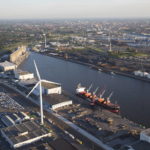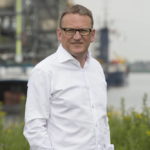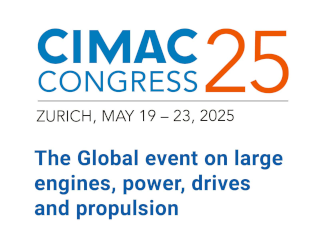Port of Ghent has announced a merger with Zeeland Seaports. In an interview , CEO Port of Ghent and (co)CEO of the new company called North Sea Port, explains the background for the decision and gives an outlook for the future. By Thomas Wägener
The merger will pose a huge challenge to the Port of Ghent because technically, it will be a daugher of[ds_preview] the european holding but not a standalone company anymore, said Schalck. The intention of North Sea Port including Flushing, Borsele and Terneuzen in the Netherlands and Ghent in Belgium is to become a new player fit to enter the top ten of the European ports.
We will handle 65mill.t of seaborne cargo and about 53mill.t by inland barge,« Schalck expects for the future. The goal is to become »a real top player in our region.« In terms of added value and created jobs, North Sea Port will become the third European port after Rotterdam and Antwerp he added.
Rotterdam and Antwerp as partners
But for the Port of Ghent alone the plan is to continue business as a specialized port not competing with Rotterdam and Antwerp, Schalck told. According to his information, only 8% of the cargo volume handled in Ghent would compete with the two bigger ports.
The focus is rather on some added services, including container services, as there would not be enough space in the port areas of Rotterdam and Antwerp. »In total we have around 1,000ha available for new companies. Some of them also can have the quayside. But we cannot only offer plots of land to players which want to develop added value logistic activities, we also try to develop train connections and inland barge connections to the big container terminals in Rotterdam and Antwerp to avoid traffic jams in the area of those cities,« said Schalck. Therefore, he budgets North Sea Port as an addition to the activities of Rotterdam and Antwerp and as a kind of partnership – not as a competitor like Dunkerque.
»When we start with a barge service, we even support the start of those activities together with those ports on a financial level also,« he gives an example. At the start of an operation it’s sometimes difficult to create volume, therefore a fund was launched with Antwerp and Rotterdam to establish that sort of services. Another example are pipelines for the oil and gas industry.
»We have our standalone activities but these are more related to the industry,« he says. Due to the merger which creates North Sea Port he hopes for better opportunities for added value in combining load for the existing clients – not only on the seaside but especially by inland barge and rail transport. For example, Schalck expects good prospects for cars in Ghent and Flushing and a good combination for the short sea container services to the UK as well. He envisages the location of Flushing at the entrance of the North Sea as a good prerequisite to develop the offshore wind industry with related services.
Strong year for Ghent
According to Schalck the number of handled goods in the Port of Ghent will rise again for 2017. He expects that it will be between 32 and 32.5 mill.t. at the end of the year. That would result in an increase of almost 12% compared to the 29.1mill.t handled in 2016. Schalck says this is based on the positive development of the industry. Big players of the steel business like Arcelor Mittal and others for the production of biofuels are located either in the port or nearby. Schalck referred to record figures generated by the automotive and truck industry also. The second factor for the positive result would be the better figures by the investors at the Kluizendok, which opened in 2010.
Due to the fact that Ghent is closely linked to the industry, many of the incoming goods stay in the port area. »60% of the goods are reused by the industry in the Port of Ghent or in the area around it,« he explained. These are mainly iron ore, coal, wood pellets for the production of electricity, goods which are used by Volvo for the production of cars, and also the raw materials for biofuels. The remaining 40% include liquids and roro materials reexported to Germany and other European countries. About 55% are transported by barge, 12% by rail and the remaining 33% by road.
New lock for a better access
One of the main challenges for the inland ports like Ghent and Terneuzen is to create a better access to the sea. Therefore the Dutch and Flemish Government have decided to built a new lock in Terneuzen. Schalck expects that it will be ready for operation in 2022. The Ghent CEO announced to accept post panamax vessels as soon as the new lock will be operational but not at the maximum gauge. Now Ghent can handle panamax vessels with a draft of up to 12.5m.
To offer a deeper water depth of the fairway, some works at the canalside have to be done. A tunnel in Zelzate which allows vessels of 12.5m gauge only will arise concerns. This is why another tunnel will be needed in the next 15 or 20 years, he said. Flushing can already handle ships with a draft of 17m. That means that in the portfolio of the merging ports, vessels between 12.5 and 17m could be accepted. »As for Ghent, that was one of the reasons for the merger,« Schalck explained. Today it is already an option to unload a vessel partly with floating cranes in the area of Terneuzen. The vessels of 14 or 14.5m are unloaded to a gauge of 12.5m. The discharged goods at the edge of the fairway of the river Scheldt are transported to Ghent by barges.
The port of Ghent will not have to be deepened for the bigger vessels because the Kluizendok and the Rodenhuizedok, the two most recent doks, are suitable for a draft of 16 and 18m already. The southern parts of the port close to the city are planned for short sea operations and other commodities that won’t need a deeper channel. For these areas 12.5m is quite enough, Schalck said. But a bit of dredging has to be done. At a few places, especially the maneuvering zones in the Ghent Canal will have to be widend. The profile has to be changed a bit. »Now it’s a sort of a V-profile and it would be more a U-profile afterwards,« Schalck explained.
Expansion at the Dutch side
For an inland port Ghent›s options for expansion are limited. That was another reason for the merger, Schalck revealed, »because if we look at seaborne cargo, the real expansion will be at the dutch part of the port in Terneuzen or Flushing.«
»I’m glad with our position in dry bulk, fertilizers, wood and steel products,« said Schalck. He said in terms of the new commodities the intention is to look at food, the offshore wind industry and the bio-economy.
A very important project for the Ghent is the Seine–Nord Europe Canal. Schalck hopes this new nearly 110km waterway in the northern part of France could be realized with the help of European funding. When that canal will be ready he expects that Ghent›s position in the northern part of France could be six or seven times bigger than it is at the moment. Although it’s a French project, it would be very important for the North Sea Port. According to Schalck the decision has already been taken but there are some issues with the funding. Nevertheless he estimates the canal should be ready in 2025.
Thomas Wägener




















